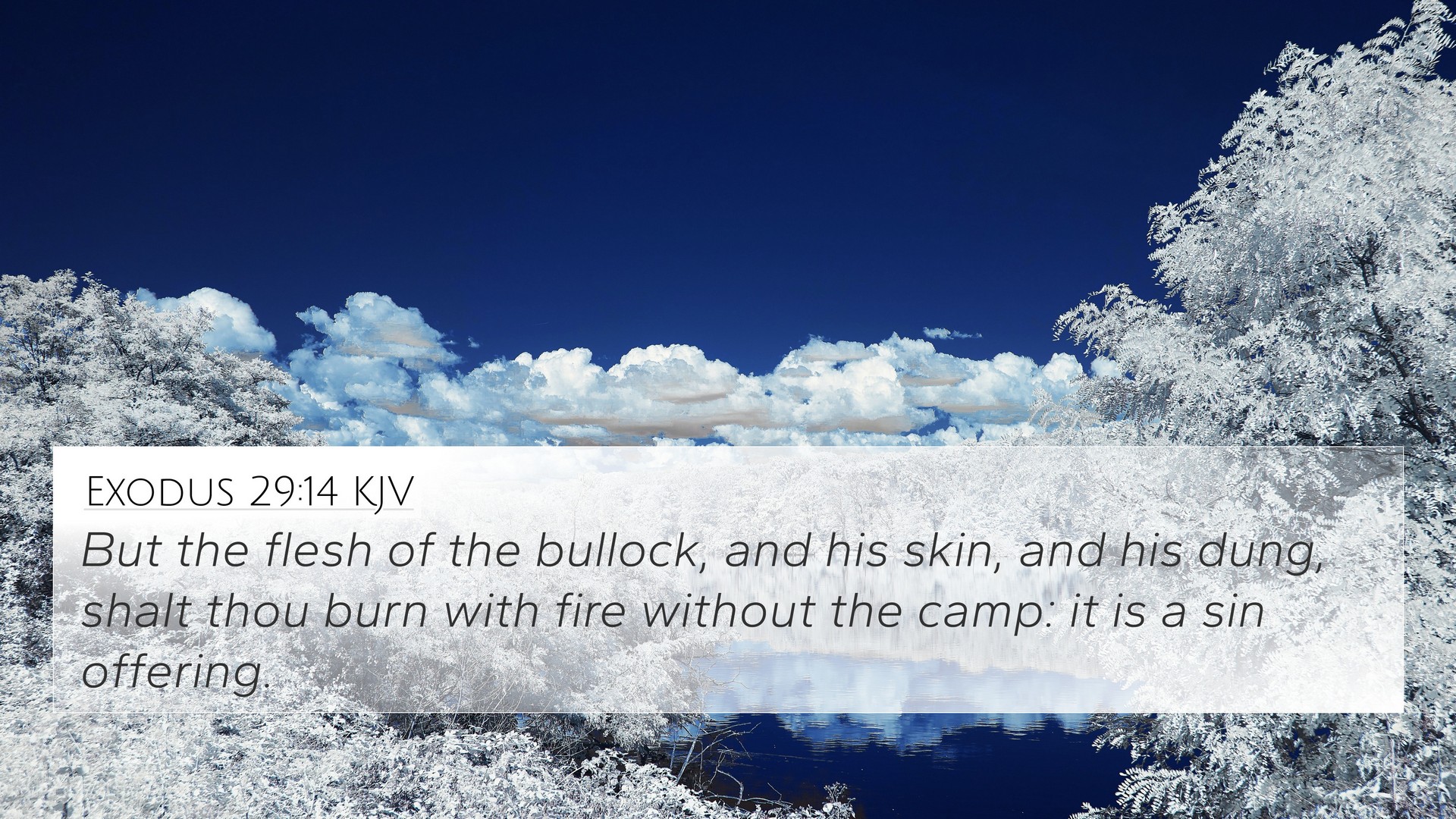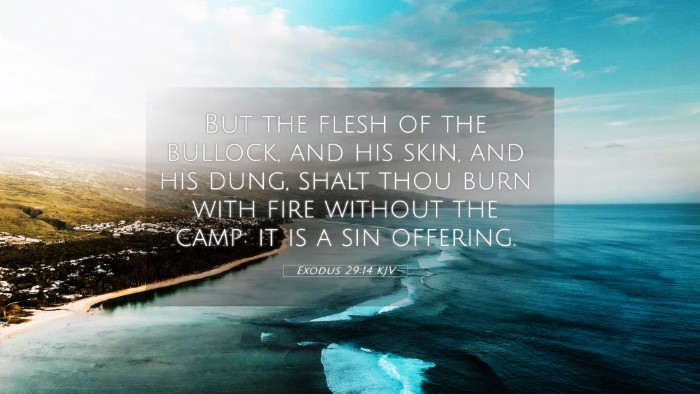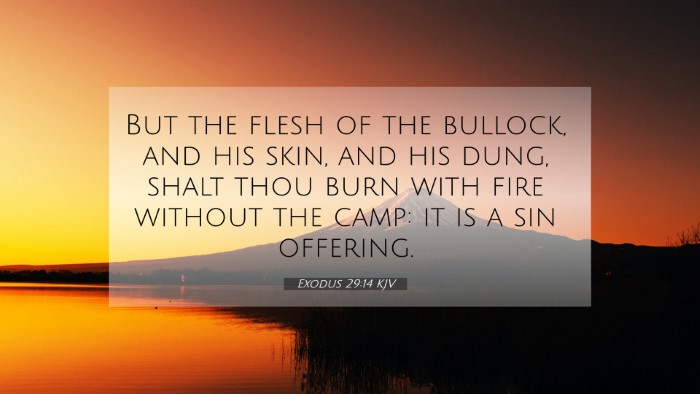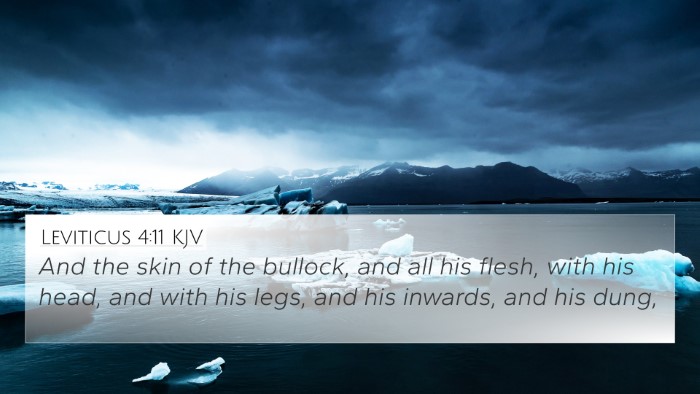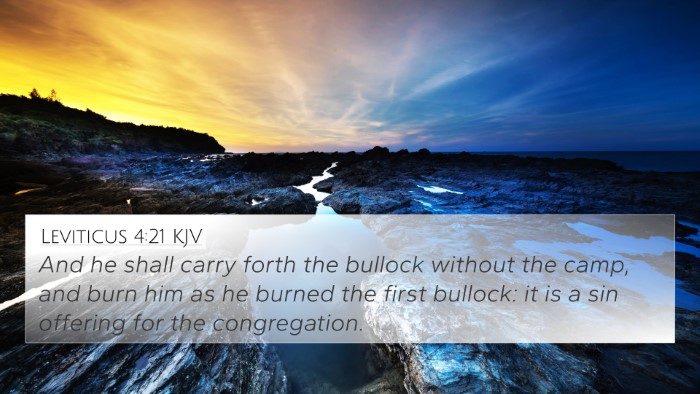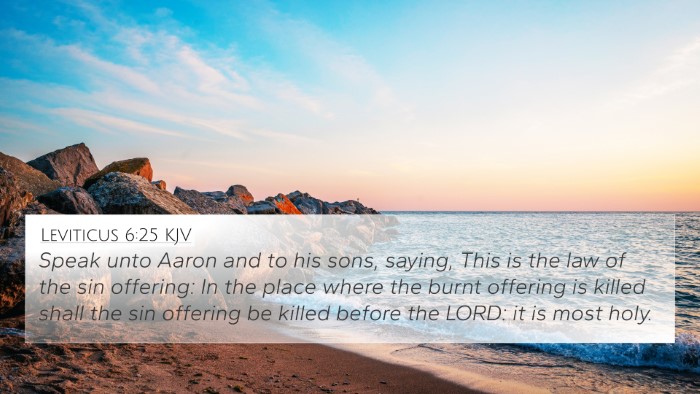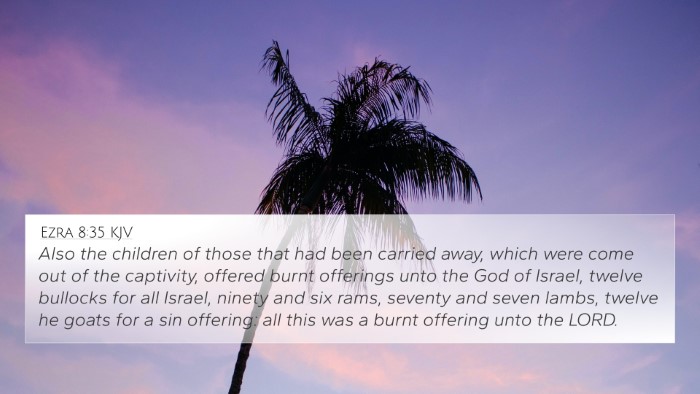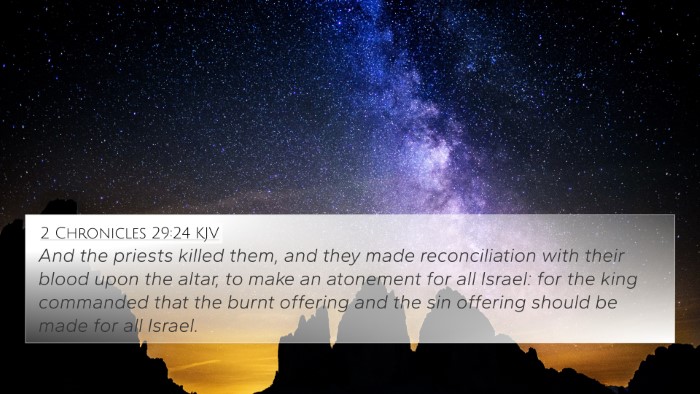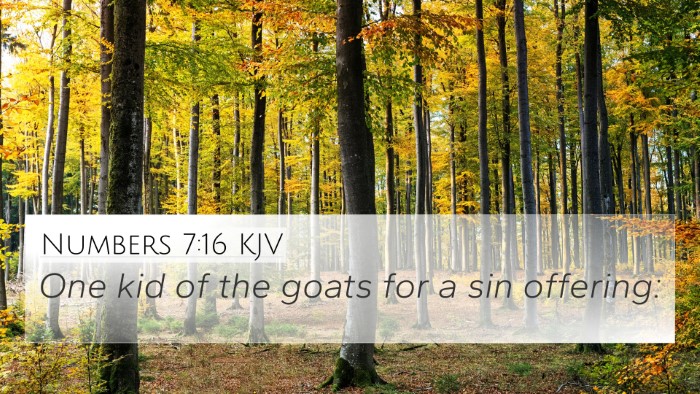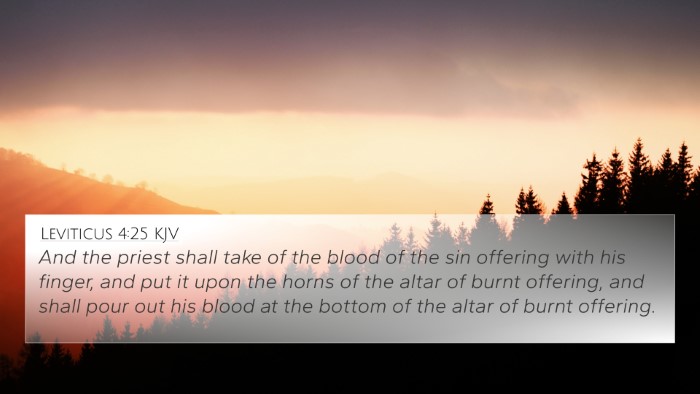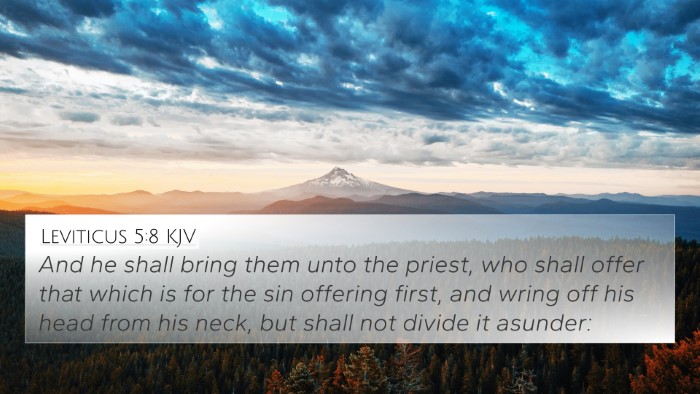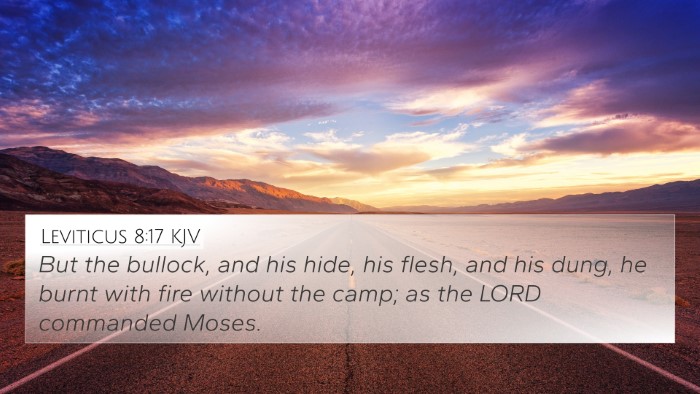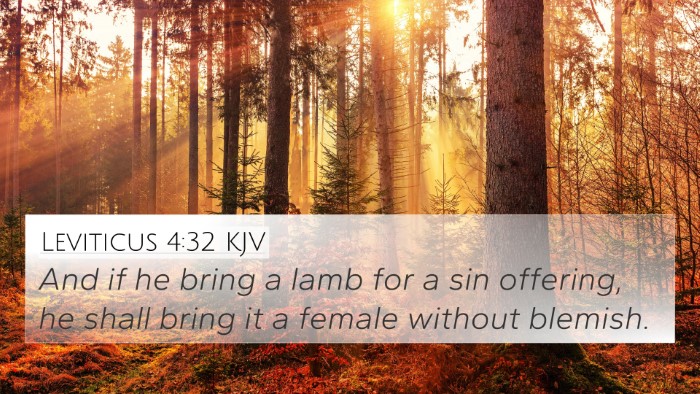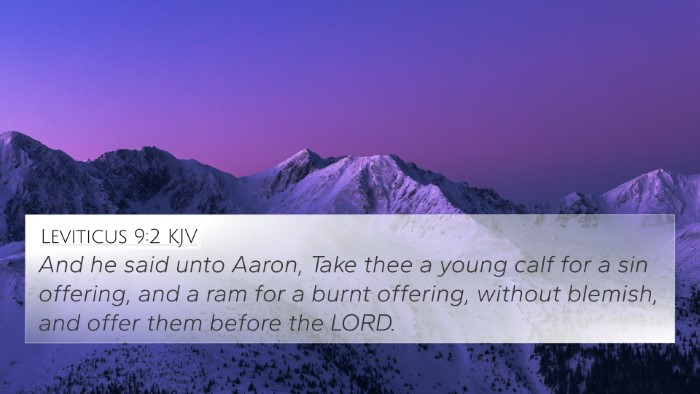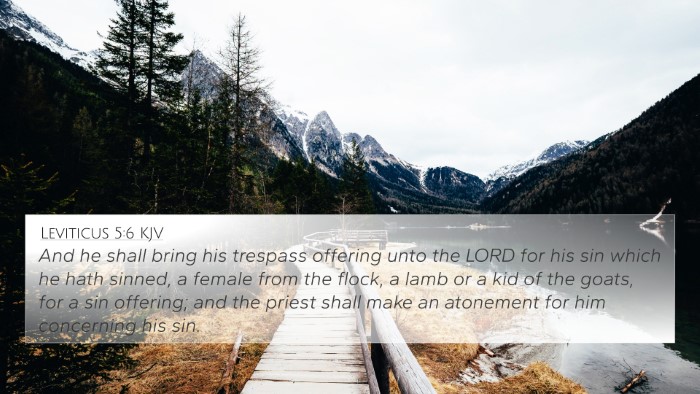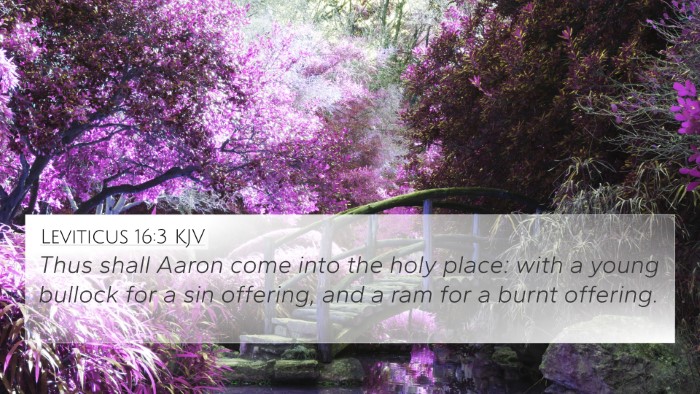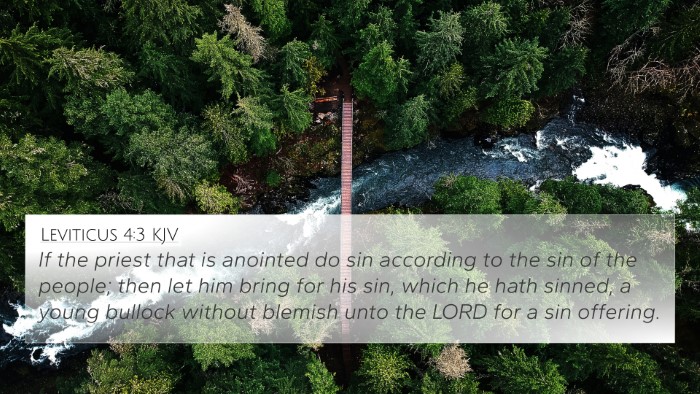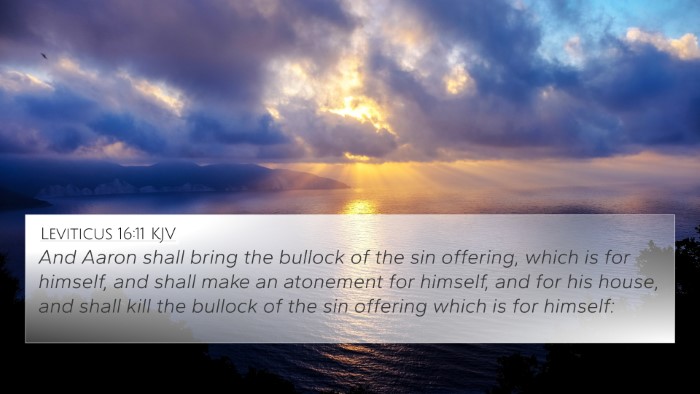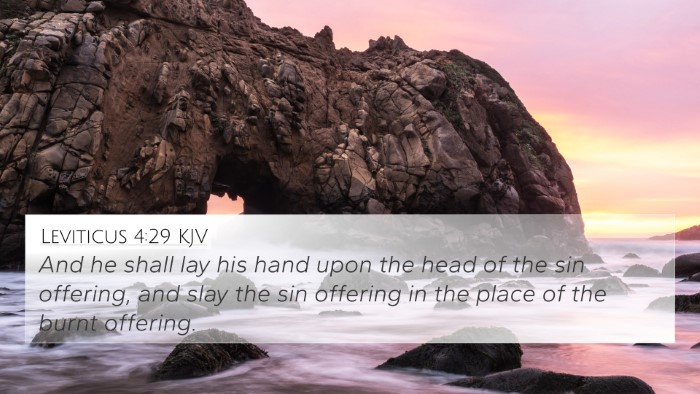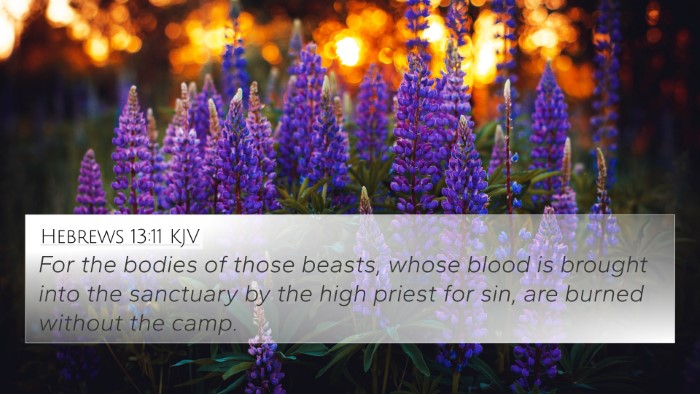Understanding Exodus 29:14
Verse Reference: Exodus 29:14 - "But the flesh of the bullock, and his skin, and his dung, shalt thou burn with fire without the camp: it is a sin offering."
Summary and Meaning
The instructions found in Exodus 29:14 are part of the consecration rites for priests, which illustrate God's requirements for holiness and the seriousness of sin. The act of burning the flesh, skin, and dung of the bullock outside the camp signifies the removal of sin and its impurities from the presence of the people.
Insights from Commentaries
- Matthew Henry:
Henry emphasizes the importance of this sacrificial act as a representation of purification. The complete burning of the animal outside the camp symbolizes the extreme measures necessary to deal with sin. It conveys the notion that sin, inherently corrupt, must be completely removed from the community of believers.
- Albert Barnes:
Barnes notes that the sin offering must be treated with reverence and care, reflecting the seriousness with which God views sin. By burning the offering outside the camp, it highlights the theme of separation from sin, reinforcing the requirement of a holy community. This action serves as a precursor to the ultimate sacrifice of Christ, who was also crucified outside the gates of Jerusalem
- Adam Clarke:
Clarke provides a detailed explanation of the significance of the specific rituals in the consecration process of the Levitical priests. He suggests that this act connects to the broader sacrificial system, demonstrating the gravity of sin that necessitated atonement through the shedding of blood thus reflecting biblical principles prevalent throughout both Testaments.
Significance in the Biblical Narrative
Exodus 29:14 serves as a crucial point in understanding the sacrificial system instituted by God for Israel. This action not only set the priesthood apart but also foreshadowed the perfect sacrifice of Jesus Christ. The sin offering is a reminder that sin incurs a serious cost and necessitates a means of atonement, which God designed through ceremonial laws.
Cross-References
This verse connects with several other scriptures that enhance its meaning:
- Leviticus 4:12: Discusses the proper handling of sin offerings and reinforces the concept of burning the remains.
- Hebrews 13:11-13: Relates to Christ’s sacrifice outside the camp, echoing the idea of sanctification through suffering.
- 1 Peter 2:24: References Christ bearing our sins in His own body; an allusion to the sacrificial system.
- Romans 8:3: Illustrates how God sent His Son as an offering for sin, fulfilling the law's requirements.
- Isaiah 53:6: Prophecies about the suffering servant and the weight of sin laid upon Him.
- Colossians 1:20: Speaks of Christ’s reconciliation through His blood, tying back to the theme of atonement.
- Hebrews 9:22: Emphasizes that without the shedding of blood there is no forgiveness of sin, establishing the necessity of sacrifices.
- Exodus 30:10: Details the process of atonement for sins which leads to purification standards in worship.
- Matthew 5:23-24: Reflects on the importance of reconciling with others, bringing the significance of sin and relationships full circle.
- John 1:29: Refers to Jesus as the Lamb of God, linking the sacrificial system to His role in salvation.
Applications for Believers
The principles behind Exodus 29:14 resonate with believers today. Understanding the gravity of sin, the necessity of atonement, and the call to live in holiness can guide personal faith and community practice. This verse serves as a reminder that through Christ’s sacrifice, believers are called to a life that reflects that same commitment to purity and separation from sin.
Thematic Connections and Resources
In studying the connections between Exodus 29:14 and other scripture, believers can utilize tools such as a Bible concordance or a Bible cross-reference guide. These resources can help identify relationships between biblical texts, enabling a deeper understanding of God’s overarching narrative. Cross-referencing Bible study methods not only enriches personal study but also aids in sermon preparation and theological exploration.
Conclusion
Exodus 29:14 is a pivotal scripture that not only provides insight into the Old Testament sacrificial system but also points to the New Testament fulfillment in Christ. Engaging with this verse through various cross-referencing techniques allows for a richer understanding of the interconnectedness of the Scriptures, revealing the depth of God's plan for redemption.
